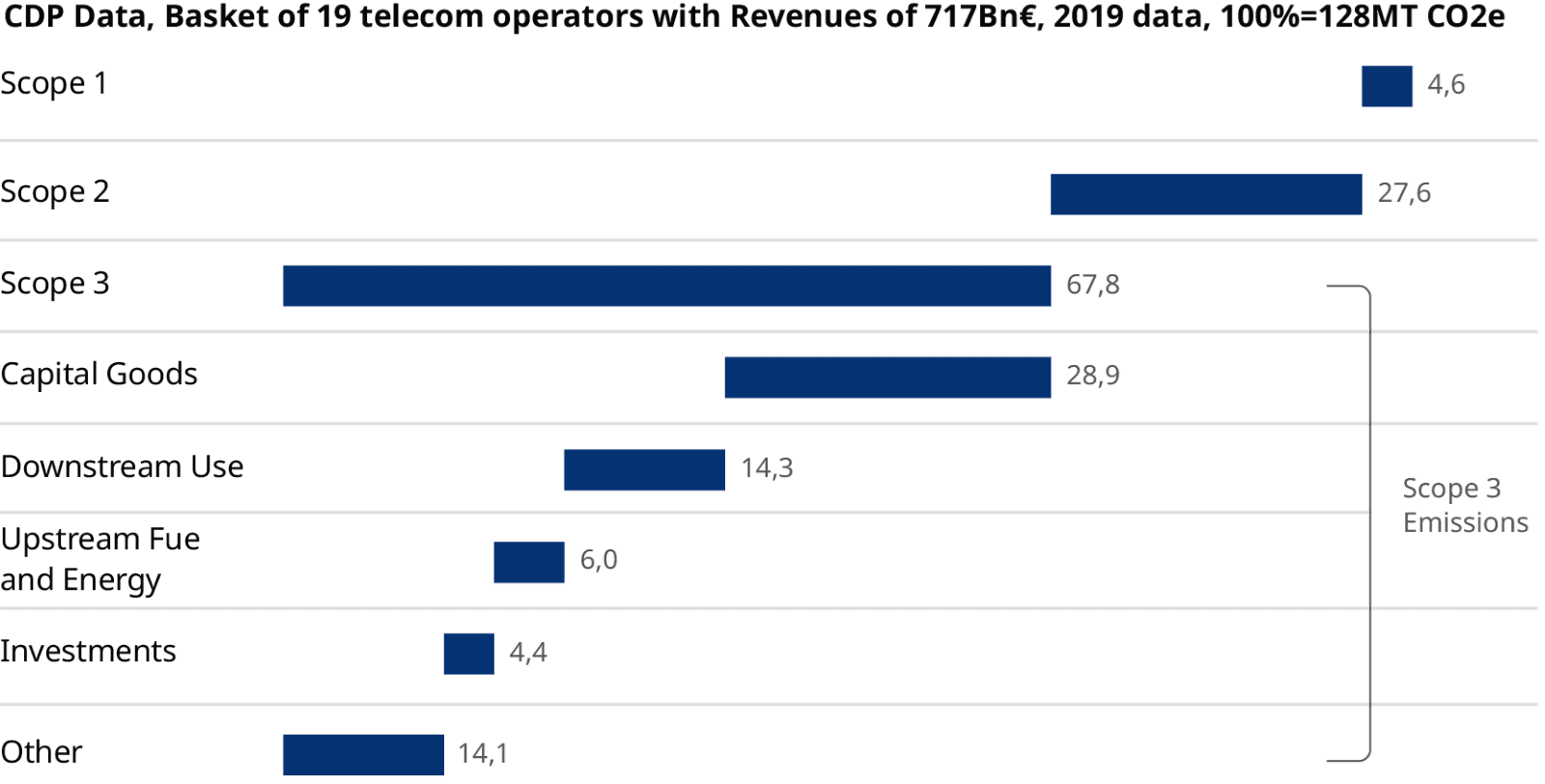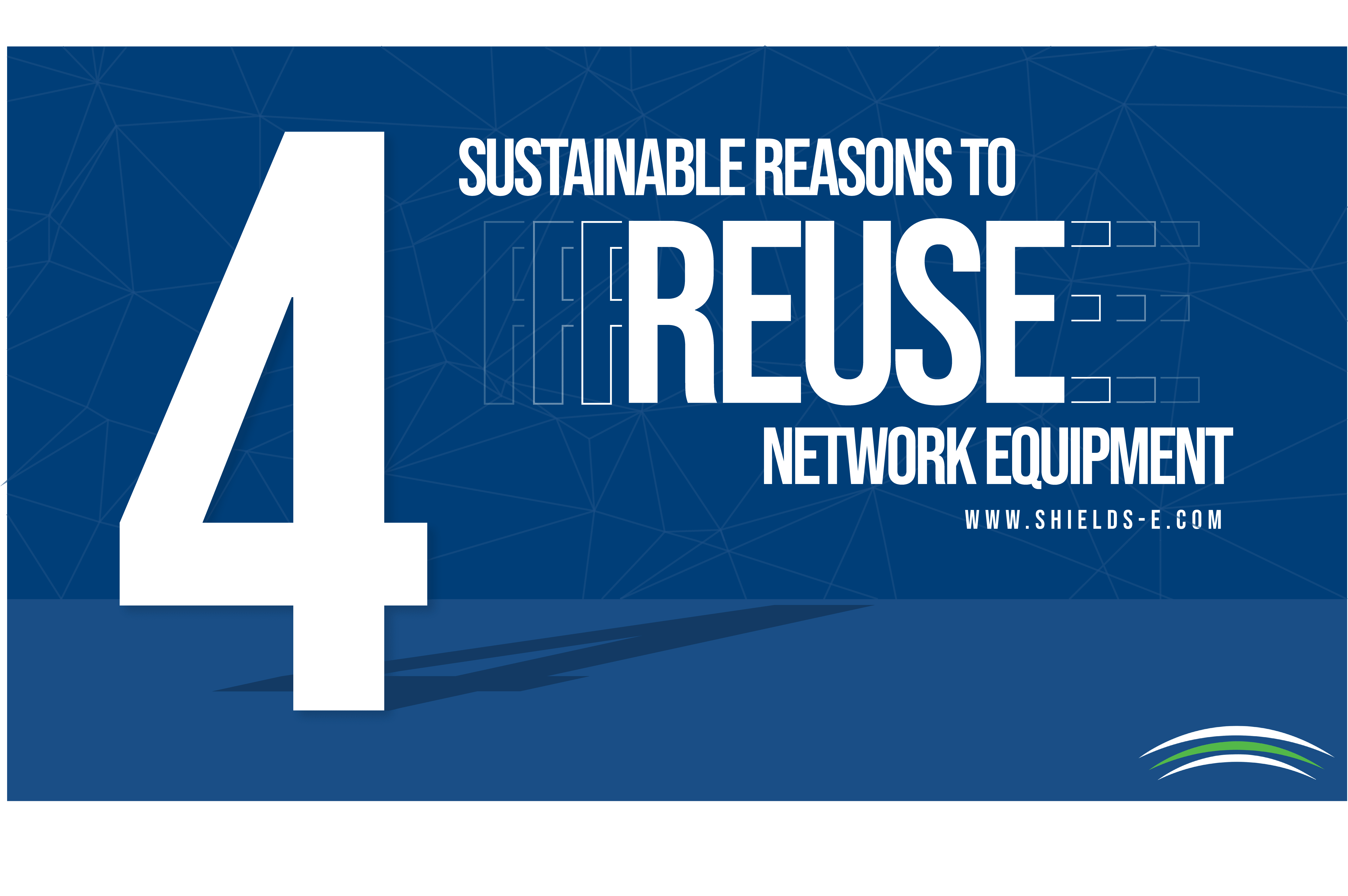Is adopting reused network equipment harming the planet, as it is less energy efficient?
A short answer to this question is ‘no’.
Summary
The criticality of reusing capital equipment in realising circular economy has been identified in several industrial publications such as GSMA Strategy Paper for Circular Economy: Network Equipment and the working paper published by Platform for Accelerating the Circular Economy (PACE). Yet, various challenges still exist when it comes to real-life implementation. The concerns over the potential lack of energy efficiency of reused equipment being one of them, from the global warming perspectives.
This paper answers the posed question ‘is adopting reused network equipment harming the planet, as it is less energy efficient?’ by listing four environmental and social benefits of reusing telecom network equipment. It takes the 5G development into consideration and proposes a hybrid way of sourcing at least 20% from reused sources for the telecom industry to accelerate the transition to a low-carbon economy, in a both practical and sustainable manner.
Four sustainable reasons to reuse network equipment:
- Climate change: Capital goods = the biggest hotspot, as renewable energy grows
- Combat resource depletion: The rise of circular economy
- Accelerate 5G roll-out: Reuse 5G to cost less and impact more
- Connectivity for all: 5G cannot be rolled out overnight, and no one should be left behind
1. Climate change: Capital goods = the biggest hotspot, as renewable energy grows
What are the GHG emissions hotspots?
Reducing greenhouse gas (GHG) emissions has become a collective commitment to mitigate climate change. For telecom operators, what are the biggest emissions hotspots to cope with? According to the CDP data from 19 operators analysed by Oliver Wyman (Table 1 below), the category of capital goods (e.g. Network equipment) from scope 3 takes, on average, one of the biggest shares (see Orange as an example), followed by scope 2 emissions from energy purchased. While the actual distribution slightly differs from operator to operator depending on business portfolio and energy selected, both capital goods and energy have been recognised as pressing emissions hotspots to tackle.
Table 1:

Source: The Next Level of Emission Reductions in Telecom Operators (oliverwyman.com)
Operating network equipment with energy purchased by operators leads to large GHG emissions. This falls under operators’ scope 2 emissions, as well as original equipment manufacturers’ (OEMs) scope 3 emissions category 11 ‘Use of Sold Products’.
For OEMs, the proportion of such emission source can consist of up to 89 – 95% of the total network equipment life cycle emissions. In addition, according to current available industrial studies, 5G seems to be more energy-efficient than legacy equipment. Operators may wonder whether reusing network equipment is harming the planet or not, as it seems to be less energy efficient.
Energy: Adoption of Renewable Energy
It is, however, important to note that initiatives such as RE100 have shown that adopting renewable energy has become a global consensus among leading businesses, especially for the telecom operators. As energy usage is gradually decarbonised, GHG emissions from capital goods purchased become the biggest and one of the most pressing reduction targets for operators.
Capital Goods: Reuse as a Solution
Fortunately, reusing network equipment is an easily implementable solution aimed at reducing the GHG emissions involved in capital goods, as shown in research below:
Based on this study, in a network equipment emissions distribution, raw material extraction and product production comprises 77% of the total cradle-to-gate emissions of a purchased network. By selecting reused equipment, for which no raw material acquisition and production are involved, majority of the GHG emissions from capital goods can be saved.
This resonates with the study conducted by Zevero, which finds out that 89% of GHG cradle-to-gate emissions can be saved by sourcing reused equipment from Shields’ MarketPlace. Based on this study result, if operators spend 20% on reused network, on average, each reused unit of equipment saves 67.49 kg CO2e, and with an estimation of 117,834,395 units of equipment addressable by MarketPlace, a total of 7,952,643 tons of carbon dioxide equivalent can be saved for the whole telecom sector.
2. Combat resource depletion: The rise of circular economy
Resource Depletion – Another Environmental Challenge
Climate change and greenhouse gas (GHG) emissions may be the most prominent and often solely emphasised environmental impact category. However, it is crucial to note that several other environmental impact indicators also exist, as shown in the table 5 in ITU-T Recommendation L.1410, such as resource depletion, land use, and toxicity, which are as relevant and critical as climate change when it comes to network equipment.
When evaluating business models and the corresponding environmental impacts, relevant key indicators should be considered in a Life Cycle Assessment (LCA). Take this study as an example, which shows that even with more energy consumption (in this case, 7%), using a remanufactured server instead of purchasing a new one is significantly more environmentally beneficial in terms of abiotic depletion and toxicity.
How can we, the telecom industry, tackle other environmental impacts, apart from climate change? The concept of circular economy provides an answer.
What is circular economy? According to the Ellen MacArthur Foundation, circular economy strives to ‘’decouple economic activity from the consumption of finite resources’’, and is ‘’underpinned by a transition to renewable energy and materials.’’ It is based on the principles of:
- Eliminate waste and pollution
- Circulate products and materials (at their highest value)
- Regenerate nature
Why reusing network equipment realises circular economy? Circular economy promotes a hierarchical framework of reverse models, which indicates that products should be shared, maintained, reused/redistributed, and if necessary refurbished/remanufactured, before sending such products for recycling. To retain the highest value of the extracted materials, companies should spare no efforts to adopt the ones with the highest priorities. Reusing network equipment, therefore, fulfills the most ideal circular scenario and avoids unnecessary raw material extraction.
3. Accelerate 5G roll-out: Reuse 5G to cost less and impact more
A critical concept to clarify here is that pre-owned equipment is not always of an older generation or is less energy efficient. In the modern business world, ownership of the latest network can change overnight, sometimes even before it has ever been deployed due to reasons such as socio-political evolution.
As it is believed that 5G can further realise digital technology such as IoT, which can in turn spur innovative sustainable changes for other industries, the faster it is deployed worldwide, the sooner the world can start benefiting from the new digital and sustainable era it brings. Therefore, deploying pre-owned equipment can help accelerate global 5G roll-out with efficient capital resource allocation.
4. Connectivity for all: 5G cannot be rolled out overnight, and no one should be left behind
Life cycle assessment can quantify the environmental impact of reusing network equipment, however, it does not cover the social benefits it realises. Based on ITU’s Measuring digital development Facts and figures 2021 report, only 63% of the total population has internet access; in developed countries the percentage is 90%, while in developing countries it drops to only 57%.
From a social sustainability perspective, it has become even more important, thanks to the lesson learnt from corona crisis, for telecom operators to realise their core mission – creating connectivity for all and leaving no one behind in this global digital transition.
How can operators achieve a higher connectivity in a practical manner? Same as the fact that we cannot demolish all existing houses and replace them with green buildings overnight, the goal cannot be achieved in near future solely rely on upgrading to 5G, which requires large amount of capital resources, physical resources, and years planning and deployment. Existing 4G and prior generations need to be maximumly utilised, especially when reusing them fits all the social, environmental, and financial preferences as discussed thus far.
Looking Ahead
Reused equipment may initially seem to be less competitive in terms of reducing global warming potential. As the share of renewable energy increases, the adoption of reused equipment has been proven to bring more benefits, from both environmental and social sustainability perspectives, on top of the financial benefits it has shown for years. Therefore, actively embracing and increasing reused equipment in network would be a critical and indispensable practice going forward.
To this end, Shields calls for operators to sign up the online platform MarketPlace and together, form the world’s largest virtualised network inventory, by sourcing at least 20% of the network budget on reused equipment, together with the remaining 80% supplied by OEMs. Another call is for OEMs to apply a circular mindset to design for network equipment reuse and refurbishment, while embracing a collaborative approach with stakeholders of all sizes to jointly pave a way towards a more sustainable future.
Written and credited to Sharon Kuo.

